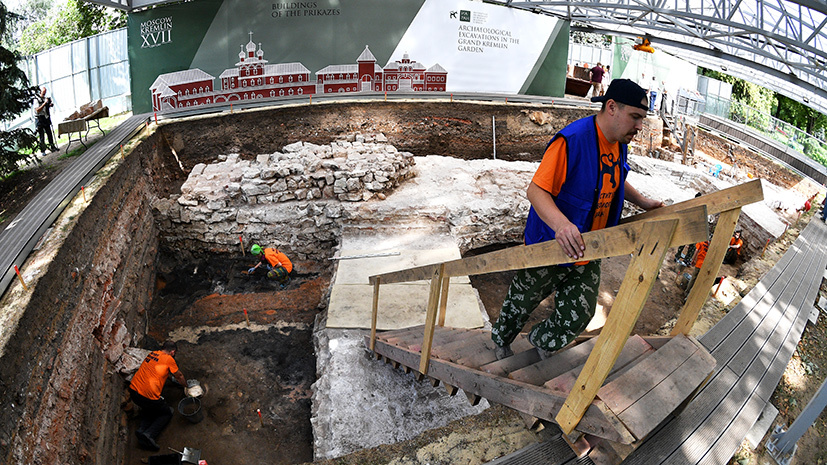"Traveling" comet and map of the Universe
On July 13, 2019, the Proton-M launch vehicle launched the Russian Spectrum-X-ray-Gamma observatory equipped with Russian and German astrophysical equipment. At the end of July, the Russian ART-XC X-ray telescope began working on it, and at the end of August - the eRosita from Germany. At the end of the year, the observatory entered a working orbit and began to progressively scan the sky. As a result of the mission, calculated until 2025, it is planned to get the most complete map of the Universe and conduct a census of space objects.
In mid-August, a Russian amateur astronomer from the Crimea, Gennady Borisov, with the help of a telescope of his own manufacture, for the first time in the world discovered an interstellar comet “traveling” between stellar systems. The International Astronomical Union officially named it in honor of a Russian researcher. According to the discoverer, the comet will forever leave the solar system in a few decades.
- Crimean amateur astronomer Gennady Borisov - discoverer of the interstellar comet
- © Photo from the personal archive of Gennady Borisov
Archaeological Kaleidoscope
In Altai, Russian scientists managed to discover the oldest cave lion figurine in Siberia, whose age, according to experts, is about 45 thousand years. Researchers from Russia, together with foreign colleagues, also first studied the DNA of the ancient population of the East Siberian Arctic and established how migration processes took place in the region over the past 30 thousand years, which, among other things, led to the settlement of North and South America.
Near Bryansk, archaeologists found a sacred fire, where people who lived in this place 23 thousand years ago performed rites using mammoth bones, primitive sculptures, paints and other artifacts. In the Voronezh region, researchers discovered the burial of a Scythian Amazon in a ceremonial headdress. Scientists say that for the first time they managed to find this garment in such safety.
In the Krasnodar Territory, the oldest Christian church in Russia (Phanagoria) and Byzantine gold coins (Taman) were found, and in Veliky Novgorod, domestic experts study the sarcophagi of the boyars of the pre-Mongol period. Active work is being carried out by archaeologists on the territory of the Moscow Kremlin, where they discovered large accumulations of coal - alleged traces of a major fire in 1571.
- Excavations on the territory of the Moscow Kremlin
- © Maxim Blinov / RIA News
New treatments
Russian doctors tested a new method of combating arrhythmia after heart surgery and reduced the likelihood of pathology by 19 times, and also found a way to bypass the blockage of programmed cell death in cancer cells, which can increase the effectiveness of cancer therapy.
In the past year, scientists found a molecule responsible for the balance of intestinal microflora, and isolated a new strain of actinobacteria producing a promising antibiotic nibomycin from black wood ants.
Russian experts have also found a way to maintain blood circulation in children suffering from heart disease. To do this, they created a device - a biotechnological system that connects veins with arteries and provides additional blood pressure. Advanced development is an alternative to transplantation.
- Biotechnological circulatory support system for patients with a single functional heart ventricle
- © Maxim Denisov
Woolly Mammoth and Mollusks
Russian biologists found in the Barents Sea of the Arctic Ocean two new for Russia species of nudibranch mollusks. It turned out that these primordially southern organisms appeared in the Barents Sea thousands of years ago and lived in it, despite global climate changes.
A group of researchers from Russia and Japan was able to partially revive cell nuclei from the tissues of the woolly mammoth Yuki, who died about 28 thousand years ago. The remains of a mammal of the ice age were discovered in the permafrost of Yakutia in 2010. According to scientists, the current level of technology development does not allow the cloning of long-extinct animals, but thanks to similar studies, this point is approaching.
New materials and compounds
A team of young scientists - students of Moscow State University, invented, designed and prepared for industrial production a bionic prosthetic arm that can partially replace the functions of a lost limb, and their colleagues from the Far East found a way to create materials for biologically compatible bone prostheses from nanoparticles. Thanks to the applied innovative technologies, such prostheses take root and stimulate the growth of living tissues.
- globallookpress.com
- © Petr Sznapka / CTK
Russian chemists have discovered new intermetallic compounds - compounds from rhenium, gallium and germanium. Such substances have semiconductor and thermoelectric properties and can be used in microelectronics. The researchers announced the publication of their discovery on the 150th anniversary of the periodic table, which predicted the existence of the elements used in the study.
Another team of chemists has developed and created new organic materials that can withstand very powerful radiation exposure. They turned out to be compounds of carbon and lanthanides - rare earth metals. Such materials can be used in a new type of nuclear power plant, in which the energy of the atomic nucleus will be transformed into an electron stream without heat generation, as well as in the creation of reliable devices that are indestructible even near a nuclear explosion.
Green Energy and Arctic Geography
Russian scientists have developed a fundamentally new wind power installation, which, thanks to its design, works regardless of the direction of the wind. Now there are about 40 prototypes of this system in the world, most of which are in Russian cities.
- Vertical axis multi-level wind power installation
- © RT
Meanwhile, geologists have established that the Arctic underwater Mendeleev ridge has a continental foundation and is part of the Eurasian continent. Currently, the UN Commission on the Limits of the Continental Shelf is considering an application from Russia for the expansion of the Arctic territories, which will rely, inter alia, on the results obtained.

